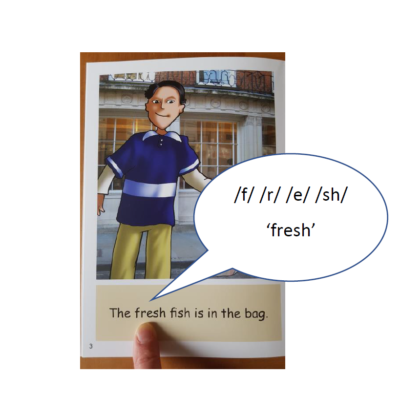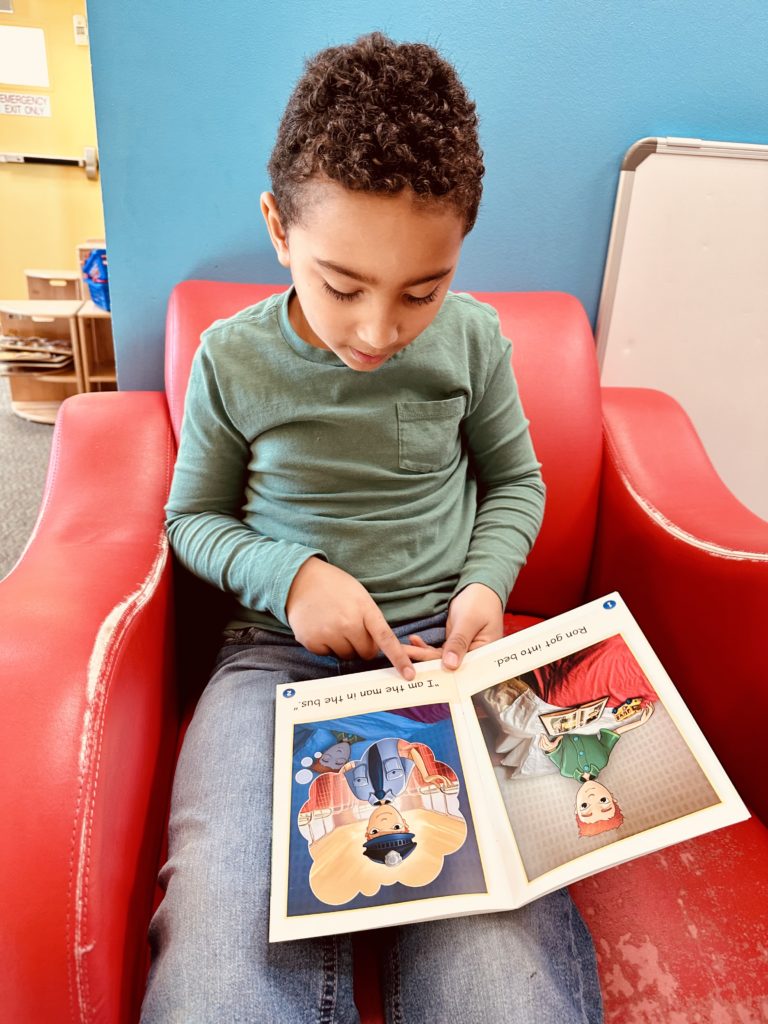What do we mean by “sound it out” and what does it entail?
When a child gets stuck on a word we often remind them to “sound it out”. As fluent readers, we assume this is very straightforward. We recognize these words automatically and skip all the stages that beginner readers need to go through in order to sound a new word out. What are those stages and what are the difficulties that may impede sounding out words by our beginner readers?
Beginner readers are often asked to ‘sound out’ new words.

1. The reader needs to be able to recognize the squiggle on the page as a letter and to know which letter it is.
For some, this may be difficult because:
- They may not have had enough practice in learning the letter/sound correspondences. This may be because the pace of learning is too fast or that too many letters are being introduced in one go.
- They may be confusing similar looking letters. The classic confusions are b/d, p/q, m/n. They may be flipping letters f/t or w/m.
What to do? We need to introduce letters in small steps, only a few at a time, and make sure the letter/sound bonds are secure before we introduce more letters. It is best to introduce these letters within meaningful words. Some children may need extra practice to discriminate between confusing letter shapes.
2. The reader needs to be able to produce the sounds of the letters.
For some this may be difficult because:
- They may not have heard some sounds in English before in their first language or dialect. For example, vowel sounds are different in many languages and children need to be able to discriminate between them, e.g. /a/ and /u/ are very similar. The sound /th/ voiced and /th/ on voiced is not used by some dialects in the UK and is a difficult sound for many English Language Learners to pronounce.
What to do? Teach the student to pronounce the sounds in a culturally sensitive way. We love to use the ‘hear myself phone’ which is featured in special needs catalogues. Make sure that a hearing test is done if necessary. Some children may need the help of a speech and language pathologist to produce certain sounds of speech.
3. The reader needs to be able to hear the sounds the letters represents.
For some, this may be difficult because:
- They may have hearing loss, due to glue ear or a more serious hearing impairment.
What do to? Make sure that children hear the sounds in isolation. Make sure that students who cannot hear sounds have their hearing checked.
4. The reader needs to be able to blend the sounds in the word together.
For some, this may be difficult because:
- There are too many sounds in the words. What to do? The teacher needs to select shorter words starting with VC and CVC words and build longer words gradually.
- The reader may need to be shown how to blend sounds into words. Some sound out the word in a robotic fashion, without being able to blend the sounds together. The method which is least taxing on working memory is the ‘stretch and blend’ stretching the sounds until they blend together. What to do? The teacher will need to demonstrate how to use this method stretching the sounds together so that they blend into a word.
- The sound in the words may be more difficult to blend. What to do? The teacher needs to choose words with continuants (consonants that you can stretch) e.g. /m/, /n/, or /s/ initially.
5. Finally, the reader needs to match the words that he/she has blended to a word they have in their stored lexicon of words.
For some, this may be difficult because:
- They don’t know the meaning of the word. What to do? We need to teach meaning, using visual images and giving examples of when the word is used.
So when we ask a student to “sound it out,” let’s remember that for some this is quite a task!

#systematicphonics #phonics #soundoutwords #strugglingreaders #beginnerreaders


